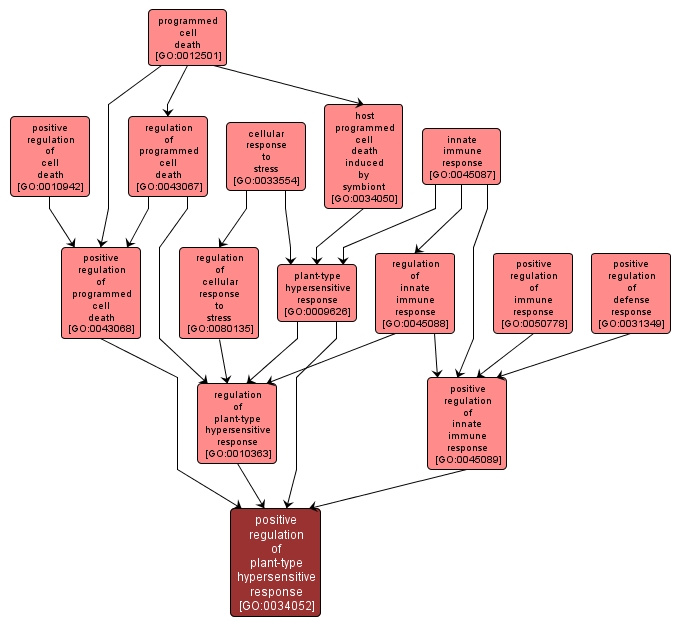GO TERM SUMMARY
|
| Name: |
positive regulation of plant-type hypersensitive response |
| Acc: |
GO:0034052 |
| Aspect: |
Biological Process |
| Desc: |
Any process that activates or increases the frequency, rate or extent of the hypersensitive response in a plant. |
Synonyms:
- positive regulation of HR-PCD
- up-regulation of plant-type hypersensitive response
- positive regulation of plant hypersensitive response
- positive regulation of HR
- up regulation of plant-type hypersensitive response
- upregulation of plant-type hypersensitive response
- activation of plant-type hypersensitive response
- stimulation of plant-type hypersensitive response
|
|

|
INTERACTIVE GO GRAPH
|














